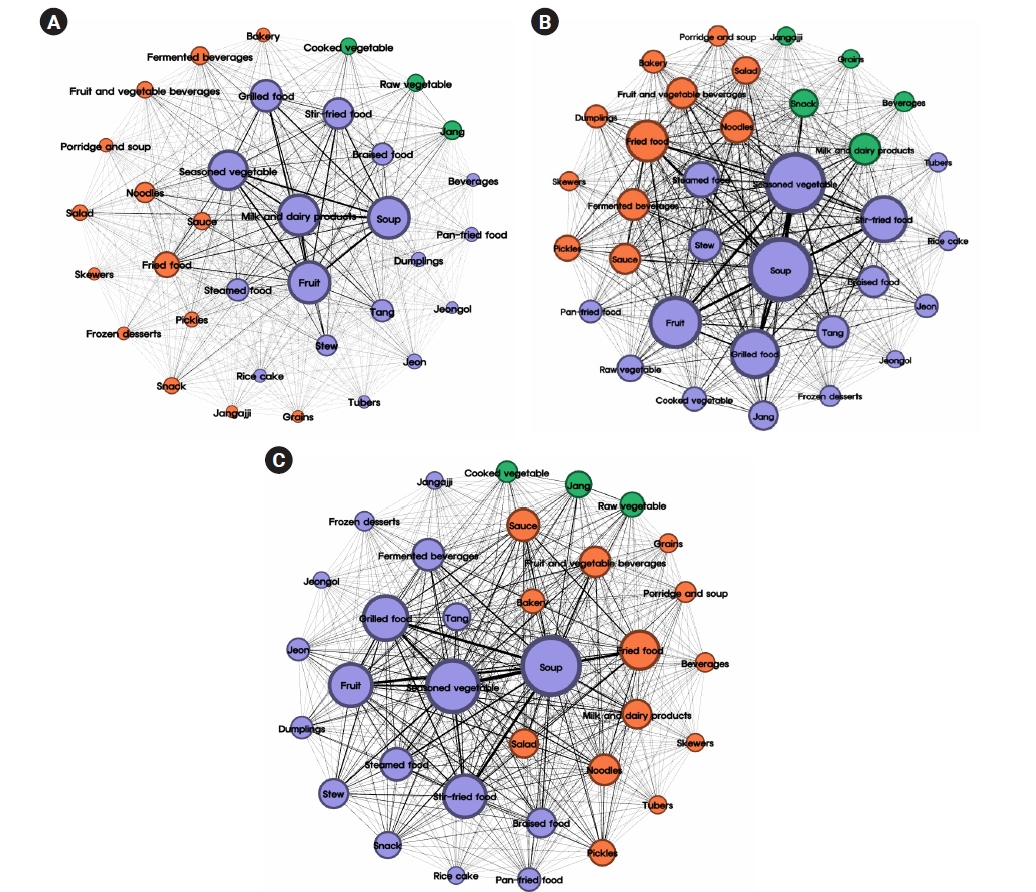- [Korean]
-
Co-occurrence network and pattern of school lunch using big data and text-mining using data from the 2021–2023 school meal menu information on the NEIS open educational information portal: an exploratory study
-
Hyeyun Kang, Jimi Kim
-
Korean J Community Nutr 2024;29(6):514-527. Published online December 31, 2024
-
DOI: https://doi.org/10.5720/kjcn.2024.00297
-
-
 Abstract Abstract
 PDF PDF Supplementary Material Supplementary Material PubReader PubReader ePub ePub
- Objectives
This study aimed to use big data from elementary, middle, and high school lunches to determine the primary food groups and menu items that contribute to lunch meals through text-mining and investigate the variations in food groups and menu composition patterns across different grade levels.
Methods
Between 2021 and 2023, a total of 7,892,456 lunch menus from 17 cities and provinces in South Korea were analyzed using big data from the National Education Information System (NEIS) system. After undergoing text preprocessing for text-mining, the collected menus were classified into 34 food groups based on primary ingredients and cooking methods, excluding the types of rice and kimchi. Subsequently, analyses of term frequency, term frequency-inverse document frequency (TF-IDF), centrality, and co-occurrence networks were performed on the food group and menu data.
Results
According to the TF-IDF, the most frequent food group across all grade levels was soup and seasoned vegetables, whereas milk was the most frequently provided menu. As the grade level increased, the frequency of grilled and fried food increased. In elementary schools, fruits exhibited the highest centrality, whereas soup had the highest centrality in middle and high schools. Co-occurrence frequency revealed that the soup-fruit combination was the most common in elementary schools, whereas soup and seasoned vegetables were most frequently paired in middle and high schools. The co-occurrence network of food groups and menus further indicated that menus regularly provided as standard meals and those frequently offered as special meals formed distinct communities.
Conclusion
This study investigated the food groups and menu provision patterns in school meals through text-mining techniques applied to large-scale school lunch. The findings may contribute in enhancing the quality of nutritional management, school foodservice, and menu composition of school meal programs.
|




